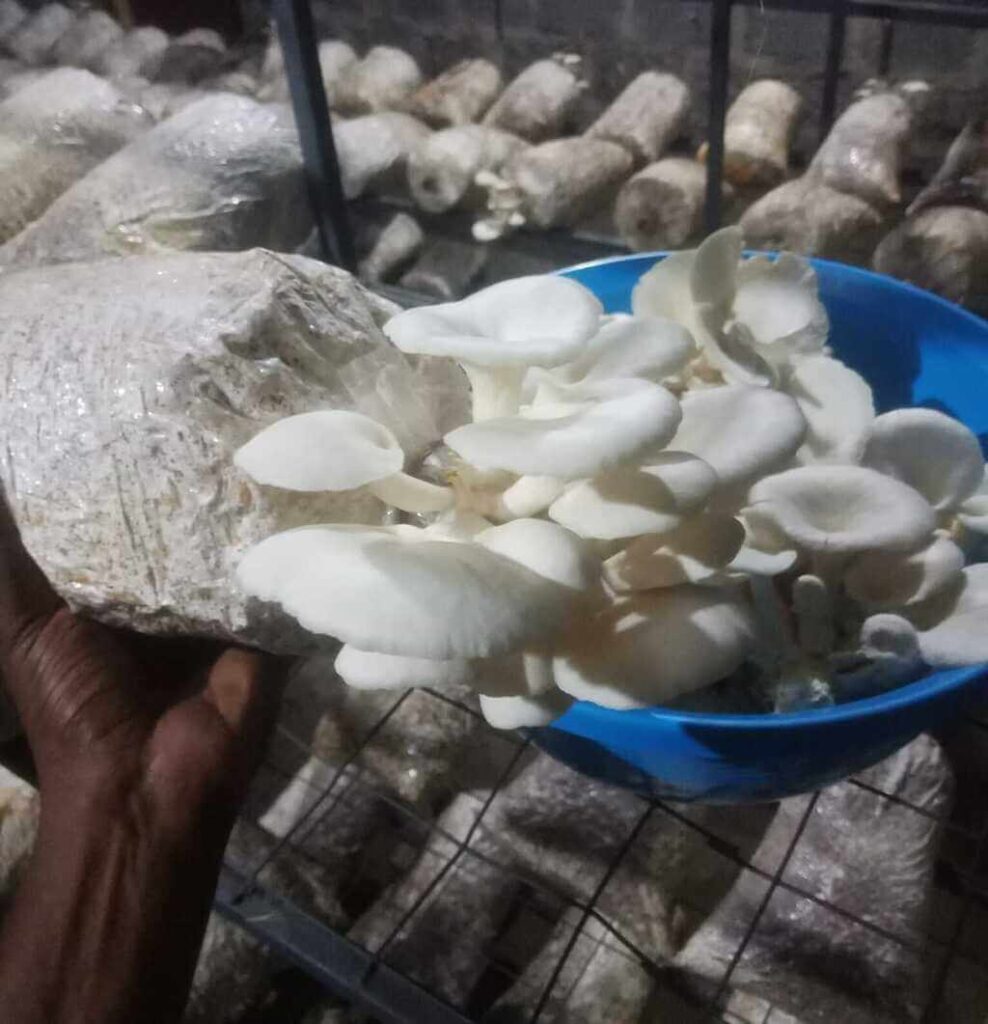Mushrooms that need little water and give continuous high earnings are emerging as a dry season solution for farmers who previously suffered a three-month gap in income until new rains.
Jotham Alphaeus of the Organic Mushroom Farm in Kamulu will harvest Sh18,000 of oyster mushrooms weekly for at least the next two months, as most Kenyan farms sit barren waiting for the November to December rains
Fewer crops are as lucrative and consume fewer resources than mushrooms which take just a month and a half to grow from a seed to reach consumer plates. In that time one kilogram of mushroom consumes just 20 litres of water. Comparatively, a kg of maize takes 486 litres, potatoes consume 136 litres, tomatoes – 100 litres, cabbage 109 litres wheat 500 litres, and rice 2,500 litres.
“The beauty of farming the crop is I am not limited to when or where I can grow it because of a lack of rain. I have my 7MX6M grow-house where I can create the ideal conditions for a bumper harvest from my 1000 growing bags,” Jotham said.
Read More:
Nutritional & medicinal value of various mushrooms varieties
Accountant’s job or mushroom farming; mushrooms earn more
Rather than rain, mushrooms demand humid growing conditions.
Humidity in the growhouse needs to be kept at 75-90 per cent Jotham does this by sprinkling two to three 20-liter buckets of water on the ground daily and spraying a 16-liter knapsack on his mushroom bags and growing mushrooms.
Water sprinkled directly on the mushrooms should be clean and not salty. The amount of water sprinkled on the floor is determined by the size of the grow house and the floor type, with concrete floors consuming at least an extra liter of water.
Farmers who can get their hands on a humidifier or a fogger which can cost Sh10,000-15,000 to import into the country, can spare themselves the labor costs and half their water usage.
The most water-demanding stage of mushroom production is not their growing, but rather when preparing straw bags that provide the ‘soil’ for the fungi.
“I use four 20 liter drums to sterilise the straw before putting them in growing bags where the moisture content is 50-70 per cent of the growing straw. On their first day, I pour ten liters of water on the grow-house flour” he said.
Mushrooms also take up minimal land because they can be grown upwards and yield more than almost any other crop per acre. An acre site can harvest 270 tonnes of mushrooms annually.
In his 7MX6M room, Alpheus can house up to 3,000 mushroom-growing bags. This is because they can be grown vertically or on strings.
“All the mushrooms produce uniformly at the first harvest, known as the first flush, which is the biggest. From then on, you harvest smaller quantities daily,” he pointed out.
Because he doesn’t have to buy growing bags, the cost of his growing material is just Sh40 in spores (growing seed) and substrate (growing “soil”).
Read More:
Njiru start-up training and buying back mushrooms from farmers
FarmBiz TV:Mushrooms from beginner to advanced create higher earnings with more skills.
Each bag weighs 2.5 kg. If fairly well taken care of, they should give you a minimum of 75 to 90 per cent of this weight in mushrooms.
Mushrooms are sold to distributors, supermarkets, and hotels in punnets that weigh 250 grams each. Depending on the outlet and the season, the punnet price can vary from Sh100 to Sh250. They are also sold directly to consumers for Sh600-800 a kilogram.
“At a minimum, if I get one kilogram of mushrooms per bag and deduct that from the 40 bob it costs setting up a growing bag, it is a handsome return,” Jotham concluded.
Organic Mushroom Farm: 0722357515
